Welcome to crossover central. It’s a busy place, this. Alight here for: heinously overpriced 4x4 superminis, weirdo halfbreed hatchbacks, softened-up SUVs, ruggedised seven-seaters - and pretty well every daft, unpronounceable, meaningless new model name that the car business has conceived in the past decade.
The sheer choice on offer here for people with money to spend, ‘something a bit different’ in mind, and no descriptor more specific than the word ‘crossover’ with which to identify it, is… well, it’s a bit much. What’s needed is a touchstone - something simple. So step forward the oldest and best-established exponent of the crossover art: the jacked-up family estate car.
From early Audi Allroads and Volvo Cross Countrys to Volkswagen Alltracks, Skoda Scouts and Vauxhall Country Tourers, these do-it-all wagons seem to occupy the centre ground of the crossover market by bridging the gap between traditional and avant-garde design idioms.
Among myriad alien concepts, they are somehow knowable quantities. And today we’ve got two of them competing for one final recommendation. Although they are similarly priced, each represents a very different brand, philosophy and route to the delivery of that little bit more capability and convenience than average.
In the old-school corner, welcome a crossover with two decades and some four previous model generations behind it – not to mention the 4x4 cache conferred by a hatful of WRC championships and a catalogue full of all-wheel-drive models: the Subaru Outback. If it’s authenticity you’re after, the Outback is as blue-chip as crossovers get - and yet this latest version is no throwback.
Opposing it is a brand new player in this part of the market, one that answers the Subaru’s authenticity with starkly contrasting freshness: the Seat Leon X-Perience. All right, it’s got another daft model name – but experience teaches us that, where crossovers come in, that doesn’t necessarily make it a daft car. In fact, on the face of it, the Leon looks leaner, richer and more athletic than any utility car has a right to.
It may seem funny, to start with, that these two should come into direct competition. Formerly known as the Legacy Outback, the Subaru is, in effect, a derivative of a model designed in the early 1990s, to take on mid-sized German, Japanese and American saloons primarily in the North American market.
A decade or so ago, it wouldn’t have been strange to see higher-order Legacies compared with sporting BMW 5 Series and Jaguar S-Types on the pages of Autocar – and for them to do okay. And now here’s one priced head to head with a top-of-the-range Golf rival.
It’s an illustration, perhaps, of the difficulties suffered by the Japanese export industry in general over the past 10 years, as well as the more recent sudden improvement in the value of sterling against the yen. And it stands to reason, therefore, that the Outback would be the bigger car of our duo – and it is, by approaching a foot on length and four inches on height.
But despite its descent from loftier market territory, the Outback doesn’t trump the Leon on outright power. Both cars offer 2.0-litre turbodiesel engines; both start this exercise with 148bhp to call their own. But it’s the Seat that scores the early lead in the brochure-borne contest – by a full second on 0-62mph acceleration, 10mph on maximum speed, nearly 10mpg on combined fuel economy and 16g/km on CO2.
It’s debatable if such things actually sell crossovers, of course. In real-world, everyday use out on the road – and over mud, gravel and grass – these two cars are separated by some predictable differences.
The Leon is not just smaller, but lighter, leaner and lower. Its dynamic virtues are predominantly those we associate with normal, modern, compact road cars. The Subaru is much more car for the money, as we’ve touched on already - a bigger and more traditional means of family transport. But which covers the other’s territory more consummately?
The Leon’s is the smarter, more modern and more appealing cabin. Seat’s use of materials is more coherent than Subaru’s, and the European firm also better understands how to conjure an impression of richness than the Japanese. The brown suede panelling on the interior doorcards is an eccentric touch – and a discretionary one, since it’s optional. But even without it, the Seat’s cabin is the more upmarket.
It isn't necessarily the more pleasant, though – because airiness and space contribute plenty to that, and here the Subaru hits back. The Outback dominates this contest on space. It’s a car for grown-up families with big back seats, a wide load bay and lots of head room – and you can easily see that appealing to a customer who needs more from a car than a normal five-door can provide. The Leon does okay on practicality; its boot has a good loading length and its back seats are perfectly usable. But you wouldn’t call them roomy.
The Outback’s cabin fixtures and fittings, meanwhile, are far from disgraced on material quality. The Subaru’s switchgear is mostly the same as you’ll find in contemporary Japanese-built Toyotas – so it’s solid and robust, if a bit lacking in tactile appeal.
The swish-looking standard-fit multimedia system, meanwhile, is a bit of a turn-up for an otherwise functional but unadorned car. It looks more like an expensive piece of previous-century hi-fi equipment than a state-of-the-art smartphone – and as such, it’s a bit out of step with global trends on in-car entertainment design – but at least it looks premium.
It would be downright untrue to record that one of these cars roll, heaves and wallows when you drive it quickly and the other one doesn’t. Modern crossovers were, after all, conceived to be better to drive than that. But very few of them could match the crisp, direct on-road handling of the Leon X-Perience – and the Outback certainly doesn’t.
From behind the wheel, the Leon feels more like a hot diesel estate than a high-rise utility special. That’s partly because 15mm of extra ground clearance is pretty small potatoes, even for a modern crossover. But it’s mostly because the car has the same fast-paced steering and compact steering wheel as the standard hatchback, as well as the same taut body control and swift directional response.
If what you want is a crossover estate that handles like a Cupra diesel, you’ll probably love that. It certainly gives the Leon a more youthful, zesty kind of appeal than I expected.
But the Outback is the more comfortable family car, and much the more mature of the two. It rides with more compliance, and while it's marginally less grippy on the road and more reluctant to corner, it handles tidily and consistently - more than well enough to hold its end up. The Subaru handles as you expect it to, while the Leon is out to surprise - simple as that.
The performance levels feel quite even. Just as it’s the sportier prospect, so the Leon is also the slightly faster car of the two – but they’re more evenly matched on engine response and driveability.
Meanwhile, despite carrying a near-150kg kerb weight penalty, it’s the Outback that shades the contest on real-world fuel economy; circa-48mpg plays 45. On refinement, the Leon’s engine is the quieter at low crank speeds, but the Outback’s is the smoother-revving.
Which brings us to the bit that you may care disproportionally about if you’re a long-time resident of ‘crossover central’: how much more rugged are these cars than the family car norm? The answer, in one case, is quite a bit. In the other, you suspect the appearance of added ruggedness is all that really matters.
Regular towing and a bit of occasional service over a muddy field - that’s as tough as life is likely to get for most crossovers, I reckon. In light of which, the Subaru’s diff-based full-time four-wheel drive system – which gives it much more surefooted purchase on dirt than the Leon’s Haldex-type set-up – is probably a greater advantage than its considerably greater ground clearance.
The Outback’s traction is excellent. Parked on a steep, muddy incline, it’ll pull off without wasting more than the merest snatch of energy as wheelspin. It’d probably pull a double-axle caravan away from a boggy pitch just as casually. That’s the difference that proper diffs and hybrid off-road tyres make. The Leon’s 18in rims and sport tyres don’t generate nearly as much grip on the loose, and the four-wheel drive system doesn’t deliver power to the ground nearly as cleverly.
And on a forest track like the one on our test route, the Subaru’s advantage isn’t just about traction. The Outback’s softer-sprung, longer-travel chassis can take a reasonable-sized hit from a hidden rock and keeps all four wheels on the ground through troughs and over roots. It makes for a car with an appetite and an aptitude for light off-roading, that you can’t help but respond warmly to.
The Leon feels brittle and vulnerable should you make any attempt to follow the Subaru at the same pace: less stable and secure through the mud, more punishing over rougher surfaces. It's likely, I couldn’t help but imagine, to fall prone to anything from a puncture to a bashed sump at any time.
And the kicker in this section is in the technical specification.
While it’s actually rated to tow marginally less than the Leon on a braked trailer, the Outback will actually be the more useful tow car for an increasing proportion of UK drivers who haven’t taken a towing extension for their standard driving licence.
For that expanding chunk of the UK’s licence-holding population, a trailer can be no heavier than the car they’re towing it with – no matter what the car in question is rated for. The Subaru can therefore haul 1622kg; the Leon only 1484kg. And there are plenty of decent-sized caravans and trailers that, fully laden, would fall between those two stalls.
The verdict
I hate a conclusion with such an air of inevitability about it, but what this test boils down to is the lifestyle vehicle versus the real, 21st century utility car - and, given that they’re on offer at much the same price here, I’d defy anyone to pick the former over the latter.
The Subaru Outback just does more than the Seat Leon X-Perience - as a proper family car, tow car and an off-roader. There’s also a pleasing sense of predictability and an absence of meaningful compromise about the way it performs and handles on the road.
It feels like a big car – but a car rather than a lumbering 4x4. I’d have it with a CVT, because the torque multiplication would come in handy when towing, and because the boxer engine has the same penchant for stalling at low revs that all boxers seem to share - Porsche motors included. In a manual, I suspect your clutch would have a fairly hard life.
The Leon X-Perience, by contrast, ends up offering very little more than a normal Leon ST estate. That may be fine if all you want it is an all-paw wagon with a slightly raised seating position – but, for the money, you can have so much more.
It’s a car that’ll look the part carrying your mountain bikes all the way to the Snowdonian fells, but it’s certainly one to leave in the asphalt car park rather than to climb to the top of the burn in. Whatever the hell that is.
As one of Seat’s first forays into crossover design, it’s a respectable effort. But, as it turns out, there is a substitute for X-Perience where added-capability estate design is concerned - and, ironically enough, it’s experience with a small ‘x’.
Read Autocar's previous comparison - Jaguar XE versus BMW 3 Series
Seat Leon X-Perience 2.0 TDI SE Technology
Price £26,370; 0-62mph 8.7sec; Top speed 129mph; Economy 58.9mp; CO2 129g/km; Kerbweight 1484kg; Engine 4cyls, 1968cc, turbodiesel; Power 148bhp at 3500rpm; Torque 251lb ft at 1750rpm; Gearbox 6-spd manual
Subaru Outback 2.0d SE
Price £27,995; 0-62mph 9.7sec; Top speed 119mph; Economy 50.4mpg; CO2 145g/km; Kerbweight 1622kg; Engine 4cyls horizontally opposed, 1998cc, turbodiesel; Power 148bhp at 3600rpm; Torque 258lb ft at 1600-2800rpm; Gearbox 6-spd manual
Get the latest car news, reviews and galleries from Autocar direct to your inbox every week. Enter your email address below:










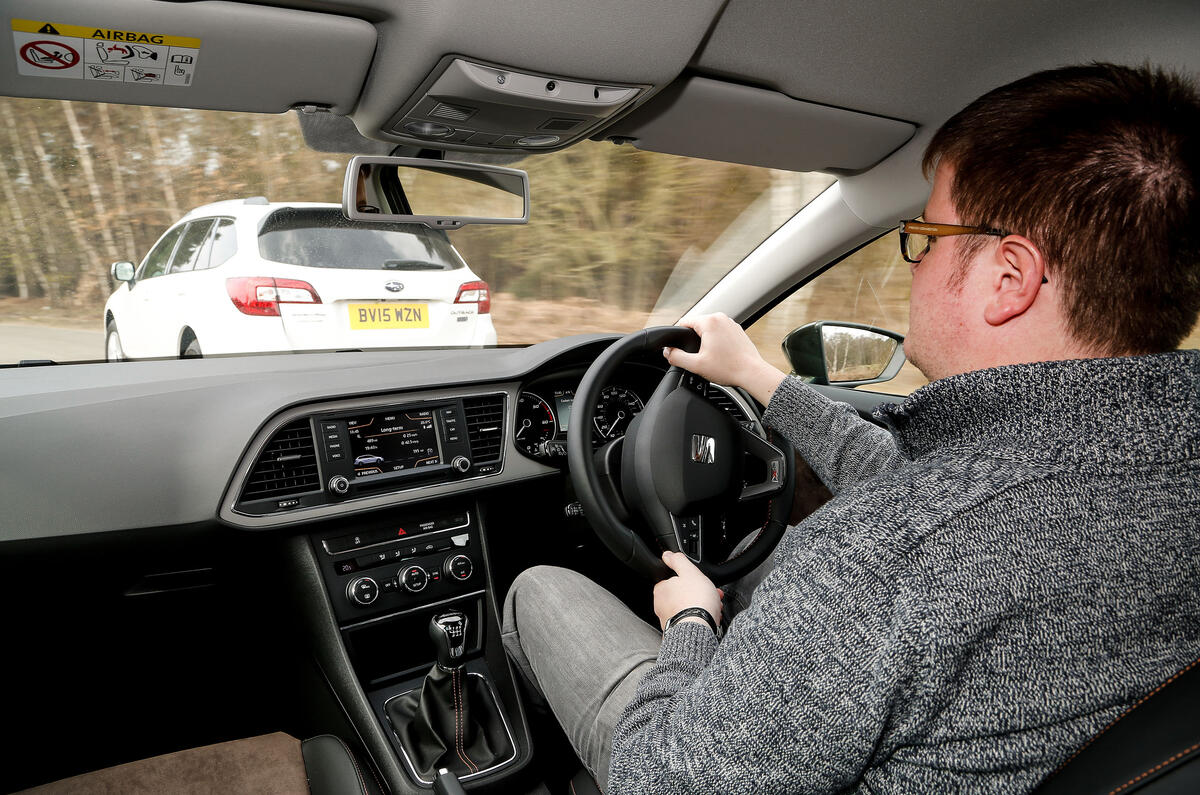



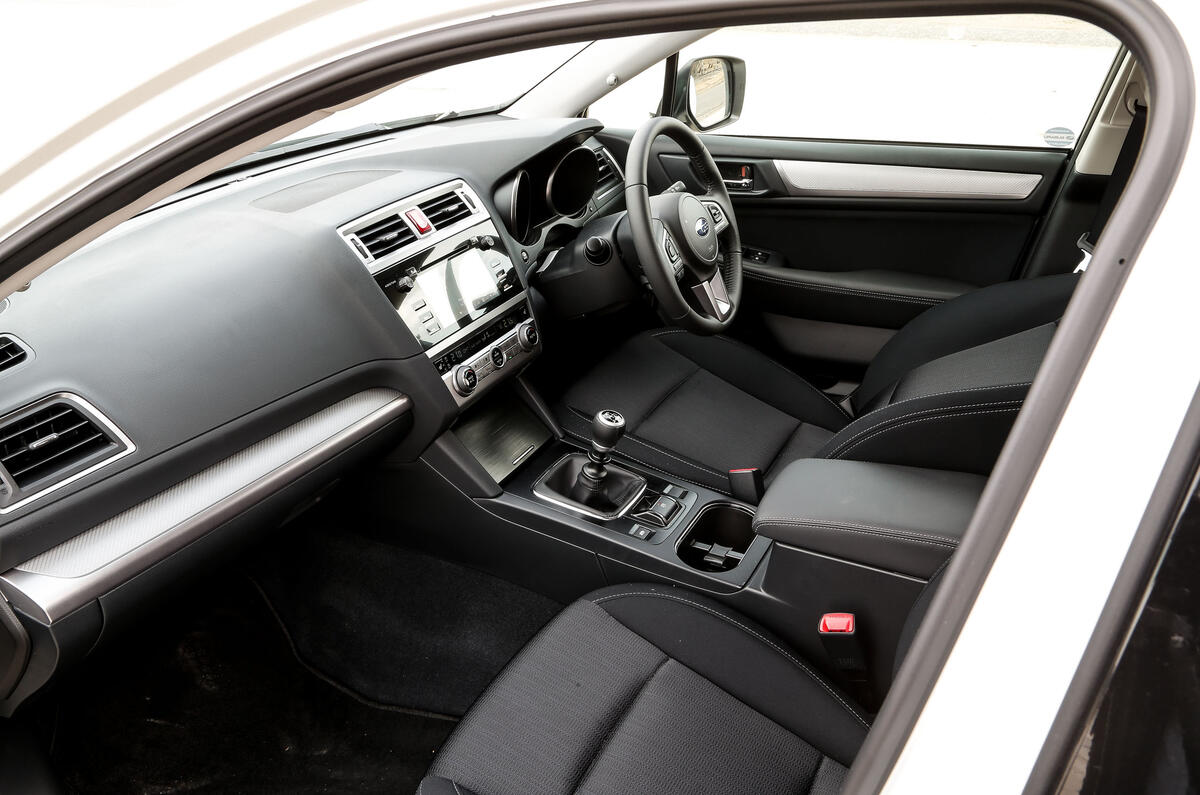











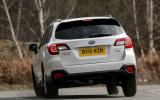



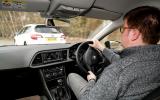

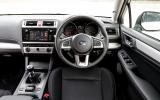






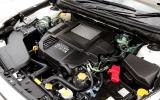







Join the debate
Add your comment
Funny someone should mention LR...
I guess if the new Outback was available with the 3.6 as is available in other markets we'd have bought one. In the end although I think it's a nice car, a big improvement than the last one, the engine choices just weren't up to our performance expectations.
So we went to our local LR dealer, apprehensive of the quality issues to look at a Discovery Sport and now we're waiting for a SDV8 RRS. A bit smart for our needs but nothing some rubber mats and caked mud up the side won't sort. We felt the RR had the same sort of authenticity off-road that always appealed about Subaru.
It might seem strange someone shopping between an Outback and a car costing almost 3x the price but Subaru always had a chunk of users who could have spent more but didn't see the need. Unfortunately for me the lack of a reasonably powerful engine was too much.
Subaru's are for farmers and
I must admit I thought the